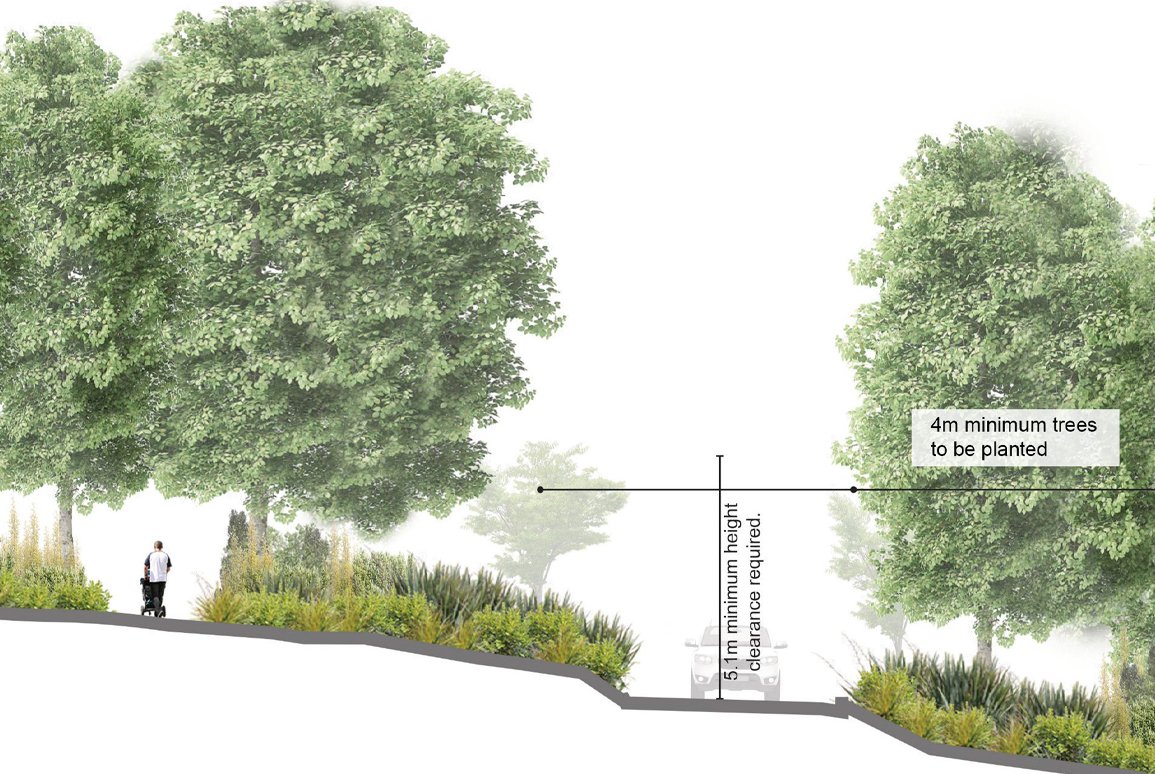Amberfield: Increasing residential capacity while protecting critically threatened bats
The Amberfield development proposes up to 1000 dwelling units incorporating a range of development densities to address Hamilton’s chronic housing shortage and rejuvenate nearby suburbs.
The Hamilton south area is an important habitat for critically threatened long-tailed bats and the Amberfield development has responded to the multiple constraints, challenges, and opportunities to sustainably develop housing within this ecologically sensitive area while protecting and enhancing the bat habitat.
“It's primarily about maintaining connections through the site,” says ecologist Andrew Blayney. “Bats can be negatively affected by light and disturbance, and they like to fly along physical and linear structures. But trying to maintain dark areas that are sufficiently wide enough and have the right type of physical structure through a residential development requires bespoke design and careful consideration of lighting, planting, and reserve layout.”
Working together, Boffa Miskell ecologists and landscape architects have devised ways to provide these bat-friendly connections, largely through blocking light and managing light at source. This includes lowering the light intensity on boundary roads around reserves, and specifically designing planting to block light and provide for bat habitat. A comprehensive predator control programme and bat roost boxes add additional protection.
When the bats are on the move, it gets more complicated. There are several areas currently used as corridors, a gully, and a bridge within the proposed development, and these have been carefully protected or designed to minimise potential impacts on bats.
Andrew explains, “The problem with bridges is that bats like to fly along physical structures, and that ‘structure’ can be a topographic feature, like a gully -- if we put a bridge in and they're flying along the edges of the gully, they’re probably at the height of the bridge.
“If they fly too low over a busy road, then these bats are at risk of being hit by a car. So, we need to design the planting and the physical structure of the bridge to ensure they either go over it at a safe height; or under the bridge.”
Landscape architect Helen Baggaley has designed planting plans to help influence bat behaviour.
“We’re using the planting throughout the Amberfield development to help influence behaviour that should keep the bats safe as they move through; and in particular, we need to manage that transition zone near bridges,” Helen says. “Tree height and spacing the gaps between trees is critical."
Splitting a road into two lanes, with a planting of tall trees in between, creates a 'bat corridor' through the residential development. The lush planting throughout Amberfield has been designed with bat behaviour and protection in mind.
Tall plantings in the zones near the bridges will encourage bats to fly up and over. Additionally, where roads intersect an important bat corridor, the road either splits into two separate lanes or constrict into one lane. These two approaches are designed to maximise canopy continuity and shrink the ‘connectivity gap’ in the trees that the bats use to navigate through the area, by allowing for retention of existing mature trees with new plantings further decreasing the gap created by the road in both instances. Buffer planting along the roads is designed to contain light from cars at night and minimize disturbance to the bats.
“It’s the first time I’ve had to make bat behaviour a primary consideration in planting design,” says Helen. “In many ways, it’s brought about a great result because of the number of large-scale trees that we’ve included along the roads and walking paths. We’ve also included open parks and meadows to provide habitat for the insects that bats eat.”
“No one’s ever done this before,” says Andrew, “but we’ve put a lot of research and thought into this aspect. Boffa Miskell’s in-house bat specialists, external bat specialists, and our terrestrial ecologists have all contributed their expertise.
“Based on what we know about bats, and what we’ve observed, these enhancement and protection measures should provide continued connectivity through the area as well as high-quality bat habitat throughout the reserves of the development.”
This article was originally published on the Boffa Miskell website and is shared with permission.


